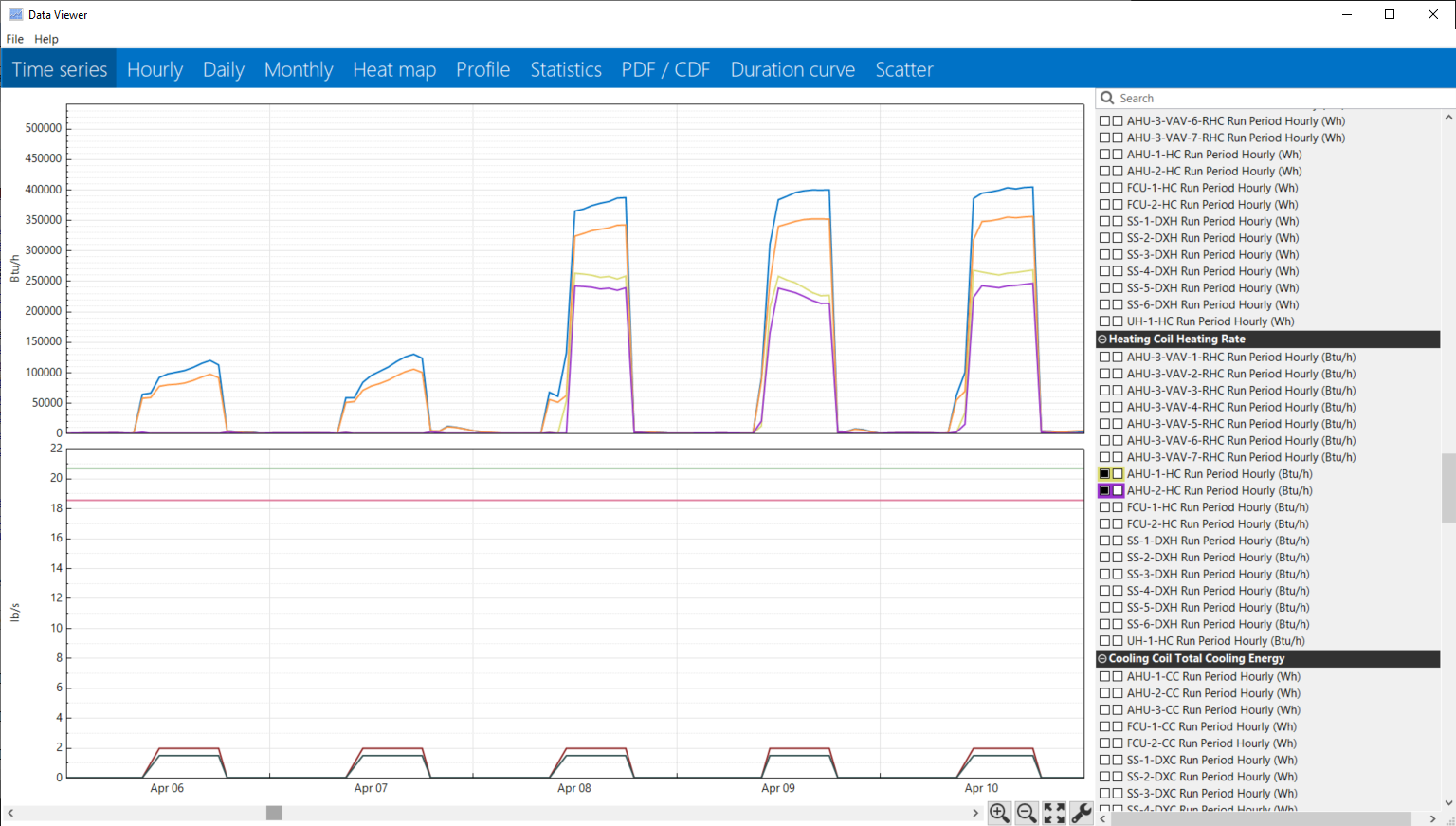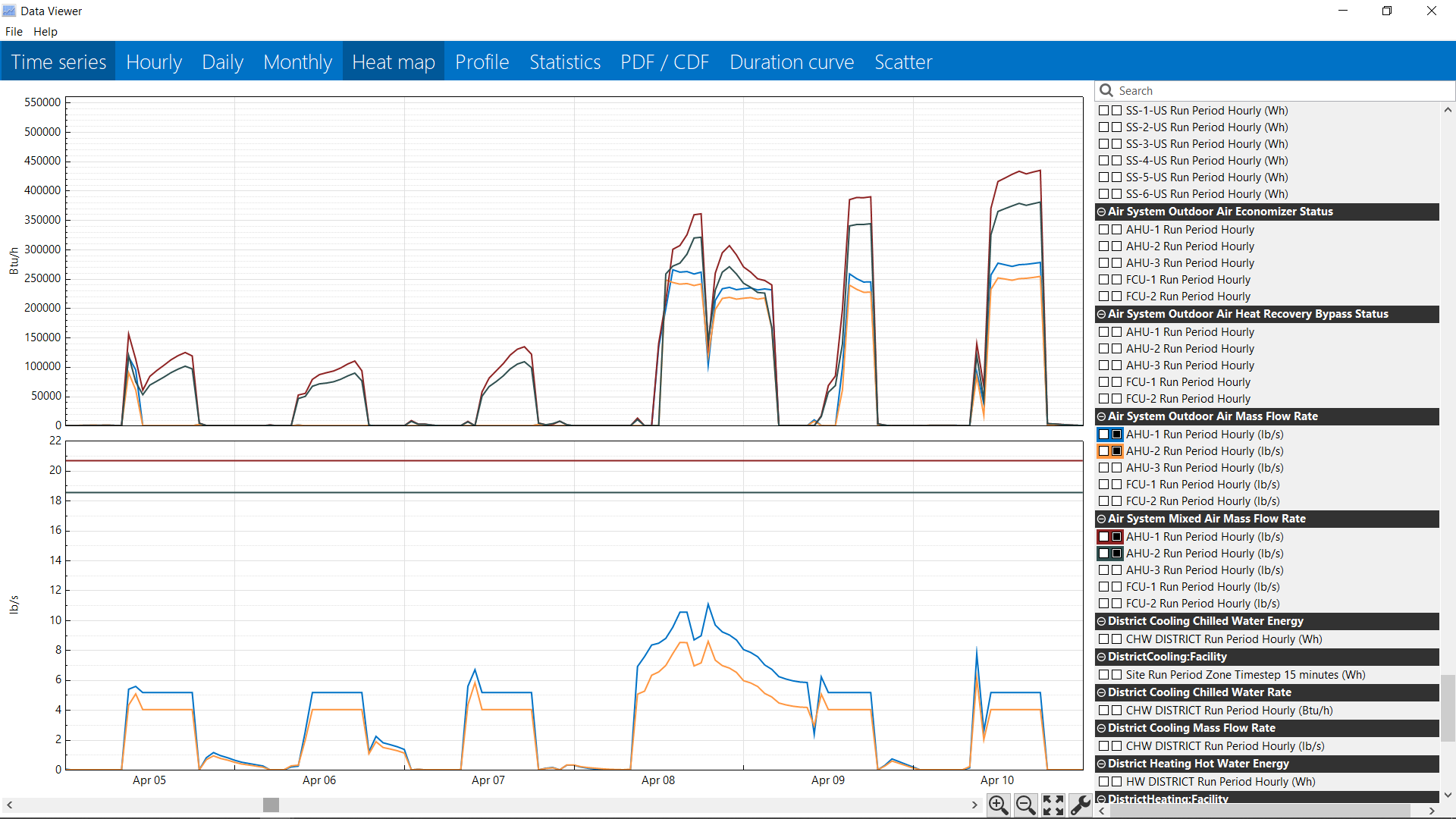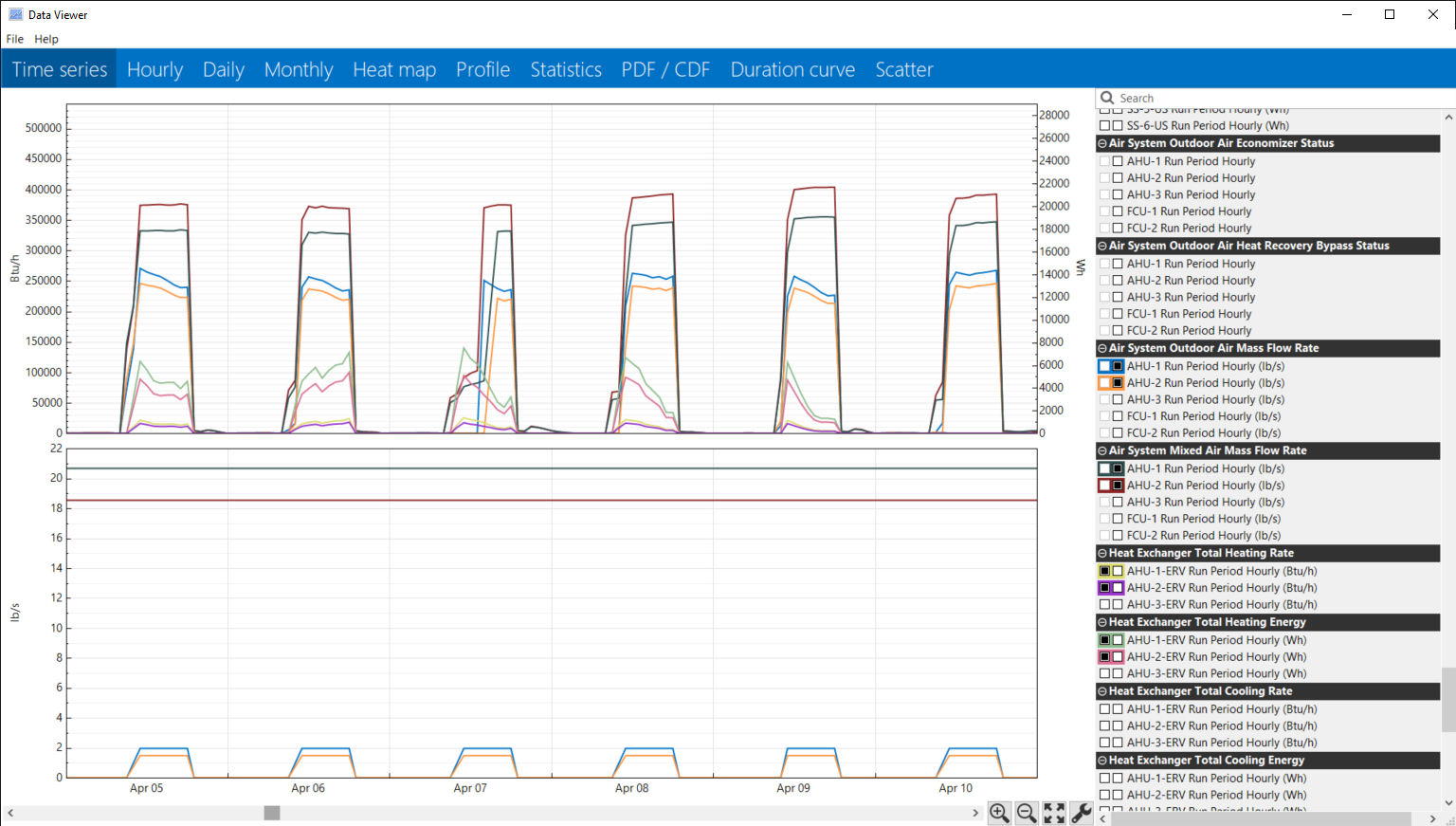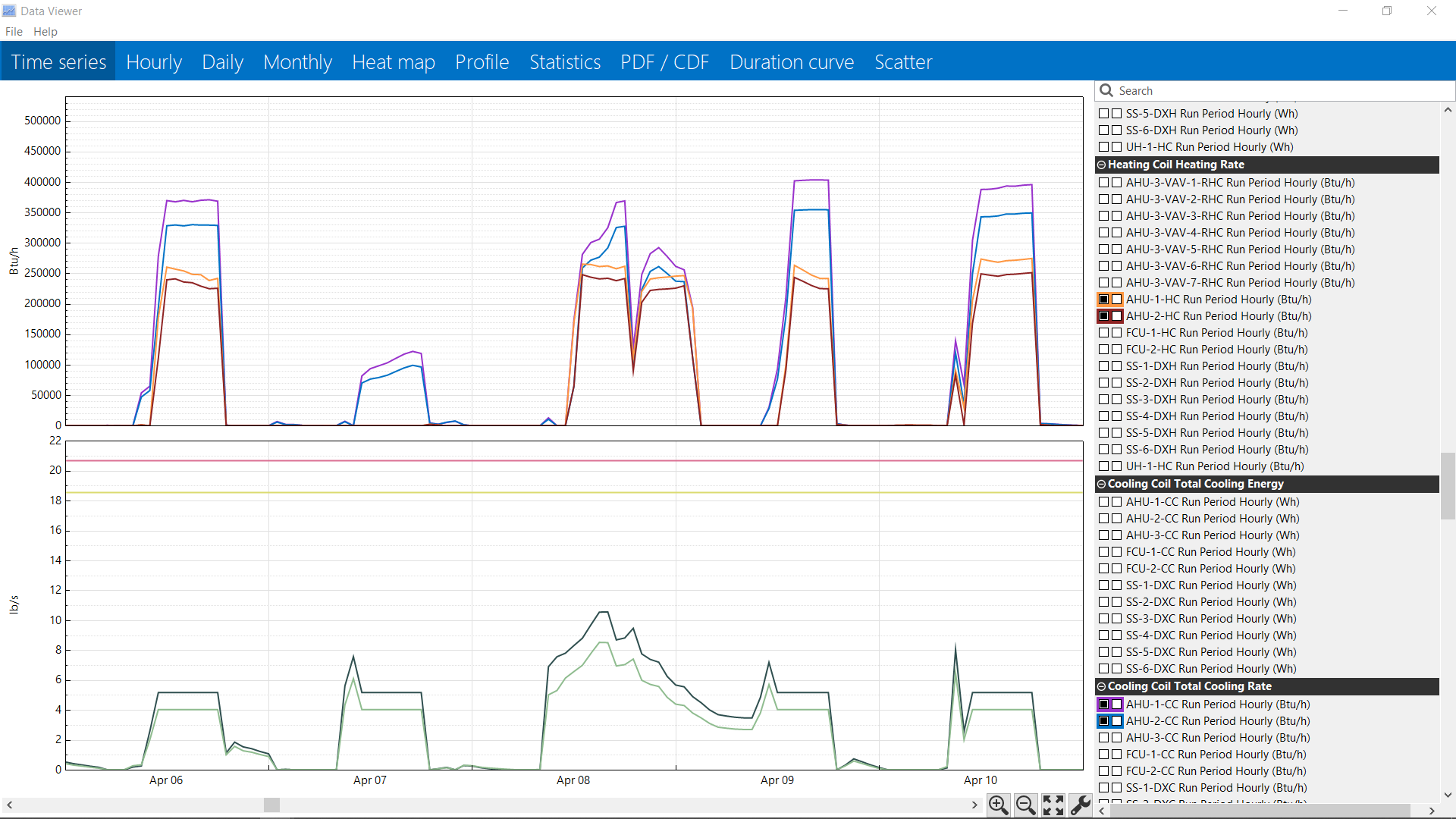energy consumption increase with ERV?
I have a fairly simple model with two large singe zone CAV AHU and one large multi-zone VAV AHU. The CAV AHU have CHW cooling and HW heating coils, the VAV AHU has a CHW cooling coil, with HW reheating coils in its seven (7) VAV terminal units. CHW and HW are district energy, i.e. no local chiller or boiler. All three AHU also have some OA (10% ... 15%). During occupied hours, these have both a thermostat and a humidistat. Both temperatures and humidities come out as expected when running the model and reviewing data in DView, as do flow rates.
So then I thought I'd add ERV to each AHU and see what happens. All I do is insert a HeatExchanger:AirToAir:SensibleAndLatent, set its flow rate to the OA flow rate of the AHU (from Controller:OutdoorAir, which has minimum and maximum set to the same value), set "Supply Air Outlet Temperature Control" to "No" and then run the model.
When I do that, the EUI increases (!) from 131.60 kBTU/ft2/y to 137.65 kBTU/ft2/y, and the increase is due almost entirely to increases in district cooling and especially district heating. When I look at the heat exchanger cooling and heating rate in DView, there is some energy being exchanged in summer and winter (all positive numbers), something like 10% of the CHW cooling and HW heating coil energy.
So why does the EUI increase with ERV? I am not even adjusting for any pressure drop increase due to the presence of the ERV in the air stream, and the increase, like I said, seems to be almost entirely due to district energy anyway. By the way, the Heat Recovery Bypass Status and Economizer Status appear to be zero at all hours, too.
Update <<<
For what it is worth, I added a few images from DVIEW. In each image, the top shows the cooling and heating coil rate, as well as - where applicable - the ERV heat exchange rate. The bottom shows the mixed and outdoor air flow rates. Because of 24 h dehumidification, the HVAC schedule is always on. For "No Eco, No ERV" as well as for "ERV", I limited the outdoor air flow to the minimum outdoor air flow, while for "Eco" and "Eco & ERV", I allowed the outdoor air flow to be as much as the mixed air flow, if the outdoor air controller wanted it to.
No Eco, No ERV

Eco

ERV

Eco & ERV

I find the double "hump" in cases with Eco interesting - this destroys any gains made elsewhere. And for cases with ERV, the cooling/heating coils run in the first two days where they are much smaller for "No Eco, No ERV", again requiring more energy. So the observation of higher EUI with Eco and/or ERV might be explained this way, but why do the coils do this?






By the way, am I correct in tolerating an EUI of near 130 with district energy, when a RTU or local CHW/HW system may yield an EUI of something more like 60? This is because in the first case I am counting thermal energy and in the second case I am counting electrical energy (which generates like 3 times as much in thermal energy)?
Have you compared the hourly OA flow rates between the two models to make sure they are the same?
Yes, for all practical purposes, MA and OA flow rates on hourly basis are identical between no ERV and ERV.
You are right in accounting that the site EUI will be significantly higher if the building uses district energy versus using an on-site plant. Source EUI should be closer.